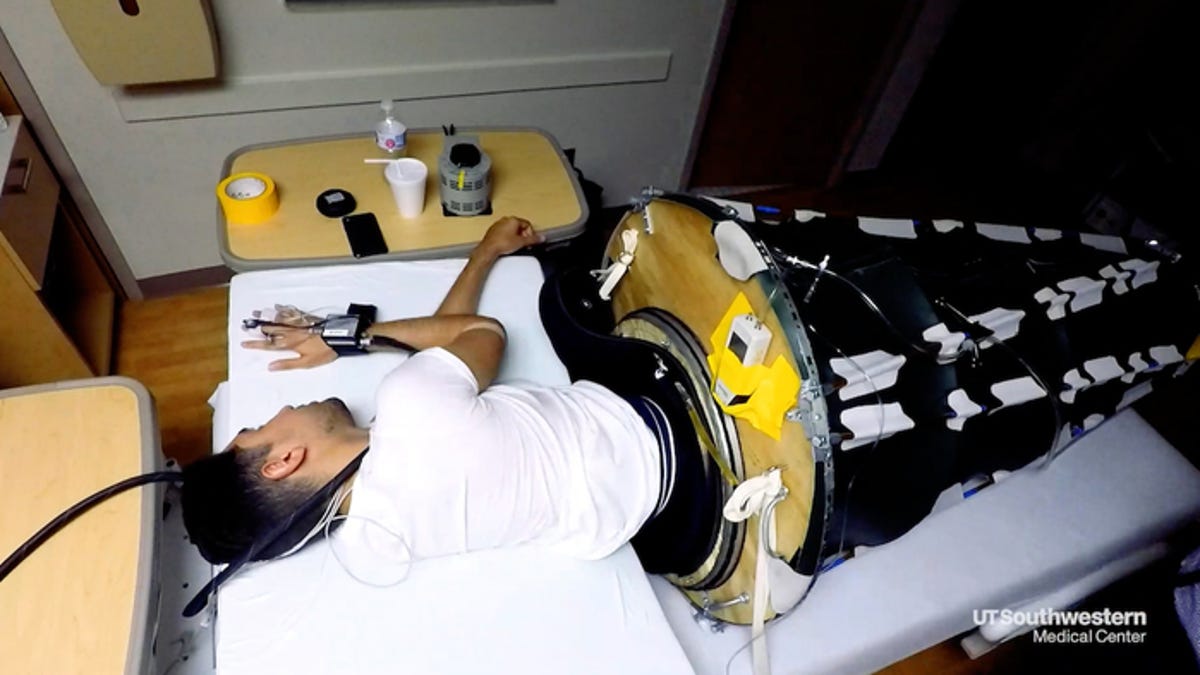Astronauts' eyeballs are warped by space. This sleeping bag could stop them changing shape
The sleeping bag uses a vacuum to keep fluids from building up in the brain and changing structures of the eyeball.

Volunteer James Leidner and the capsule-like sleeping bag used in the study.
Since the earliest spaceflights, astronauts have experienced persistent vision problems on trips into orbit and extended stays at the International Space Station. The eye issues, known as SANS, or spaceflight-associated neuro-ocular syndrome, have been linked to swelling in the brain caused by a lack of gravity.
The lack of gravity in space changes the way fluids move around the body and can cause them to float up into the head. This puts pressure on eyeballs, flattening them out and causing the optic nerve to swell. Microgravity literally reshapes eyeballs and that's bad.
"This is perhaps one of the most mission-critical medical issues that has been discovered in the last decade for the space program," Benjamin Levine, a University of Texas Southwestern cardiologist working with NASA on addressing astronaut health risks, said in a press release.
Levine helped lead a new study, published in the journal JAMA Opthalmology on Dec. 9, examining how a special, high-tech sleeping bag might help prevent SANS in astronauts. Ten subjects -- five male, five female -- were enlisted to trial the sack on Earth, climbing into bed and lying flat for three days.
They would then perform another three days of lying flat, but this time with the specialized sleeping sack attached from the waist down. The sack is essentially a suction bag that uses a technique known as "lower body negative pressure" to prevent body fluids from building up in the region around the brain and eye.
After three days without the sack, researchers noticed some changes in the shape of the eyeball here on Earth. Usually, standing up would help relieve some of that pressure because of gravity, but the patients were confined to 72 hours of horizontal stasis and couldn't find that relief.
But spending just eight hours in the futuristic (and cumbersome) sleeping bag each night seemed to prevent the eye changes from occurring. Success!
While many of the problems associated with SANS seem to resolve once astronauts return to Earth, dealing with the issue in space is critical for further, longer space missions. Getting to Mars and back, for instance, requires a lot longer than the typical six-month stay on the space station.
"We don't know how bad the effects might be on a longer flight, like a two-year Mars operation," Levine said.
With those crewed missions to Mars just over the horizon (it's a two-decade horizon, but that's pretty short in space time), solving the SANS issue will enable astronauts to travel sans worries.

